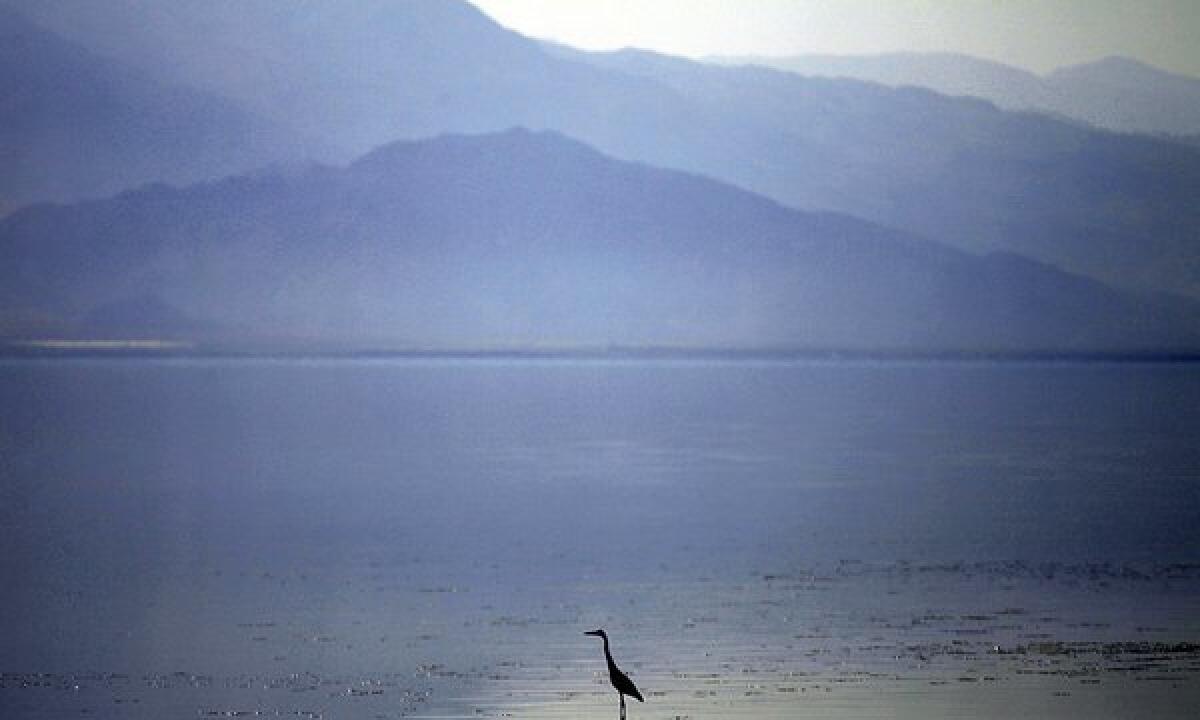SoCal geothermal power production causes earthquakes, study says

The geothermal power plants at Southern California’s Salton Sea don’t just produce electricity, they also trigger thousands of temblors not far from one of the West Coast’s most dangerous earthquake faults, a study says.
A study published online Thursday in the journal Science found that as production rose at the Imperial County geothermal field, so did the number of earthquakes. From 1981 through 2012, more than 10,000 earthquakes above magnitude 1.75 were recorded in the area.
“That group of earthquakes …. is connected to the production,” said Emily Brodsky, a UC Santa Cruz geophysicist and the paper’s lead author.
The largest quake during the three-decade study period was magnitude 5.1; the vast majority of quakes were small. But they are occurring about 12 miles from the southern end of the San Andreas fault, which seismologists predict will eventually rock the Southland with a devastating temblor.
Could the little earthquakes in the geothermal field trigger something bigger on the San Andreas?
“The big question at this point is what is the probability of jumping that gap and actually starting to interact with the San Andreas?” Brodsky said. “We don’t know the answer to that question.”
“It is plausible. Is it a certainty? No,” she added.
Geothermal power production started in the Salton Sea field in 1982 and includes one of the largest and hottest geothermal wells in the world. Plants extract super-heated water from thousands of feet beneath the earth’s surface and use it to produce steam that drives turbines to generate electricity. The remaining brine is then injected back into the ground.
It’s been known for decades that injecting fluids into the earth can lead to seismic activity. Previous studies have linked earthquakes to geothermal production.
What Brodsky and co-author Lia Lajoie, who worked on the project as a UC Santa Cruz graduate student, did was to quantify the relationship.
By examining field production data and earthquake records, they found that the earthquake rate mirrored the net extraction rate – the volume of water withdrawn minus the amount injected back into the ground.
“The net extraction…. at the Salton Sea is about half a billion gallons per month,” Brodsky said. “That results in roughly one detectable earthquake per 11 days. If you increase it, that increases the number of earthquakes. And the more earthquakes you have, the more likely you are to have a big one.”
The Salton Sea field is just one of a number of geothermal operations in California, which leads the nation in geothermal power production. Work at the much larger Geysers field in Northern California has also triggered a multitude of small quakes, according to William Ellsworth, a geophysicist with the U.S. Geological Survey office in Menlo Park, Calif.
Though not intentional, the seismic activity helps stimulate the flow of hot water by fracturing bedrock and creating pathways to the surface.
“These very tiny earthquakes that are occurring are really important for the continued operation of the geothermal field,” said Ellsworth. “If we didn’t have the little earthquakes occurring, the field would probably close up.”
Ellsworth, who was not involved in the Salton Sea study, called the results “very interesting” and said they raised questions of exactly how net extraction influenced the earthquake rate.
But he said he didn’t think the geothermal operations posed a serious risk of triggering earthquakes on the San Andreas fault.
“There are larger, natural earthquakes that occur much closer to the San Andreas and so the chances that something in the geothermal reservoir would unleash a much larger earthquake are pretty small compared to the hazard from the natural events,” Ellsworth said. “I don’t think any of my colleagues who have looked at this think that this is a major contributor to the seismic hazard.”
Geothermal production in California is regulated by the state Department of Conservation, which a spokesman said does not specifically look at seismic activity. But geothermal producers must annually submit seismic surveys to authorities.
In an email, state geologist John Parrish said the small Salton Sea quakes “are far enough away from the San Andreas fault, and at such shallow depths, that we do not believe the earth stresses in the area are being realigned so as to affect the San Andreas fault, or any other major fault within the region.”







